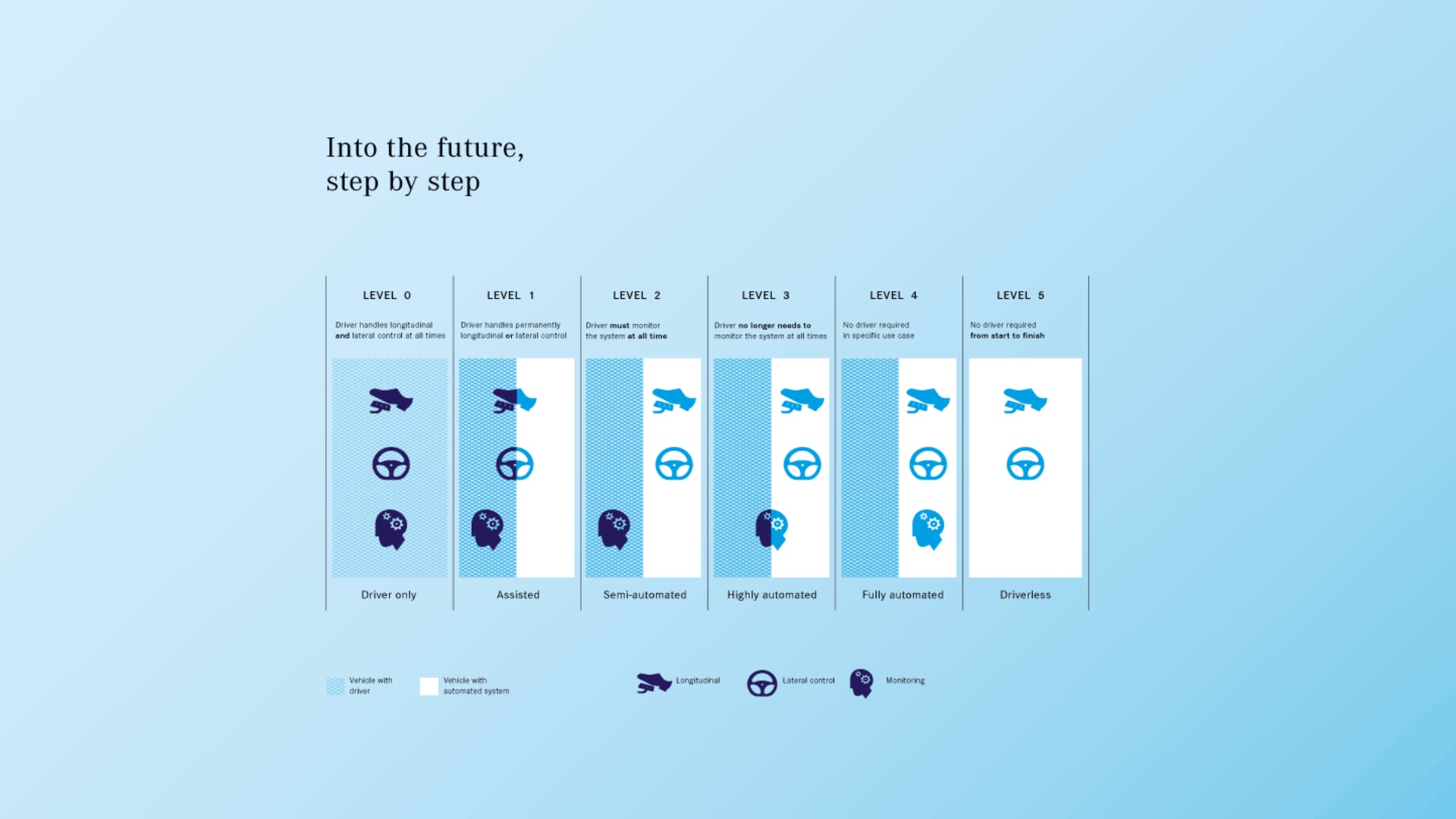High-resolution car services drive the development of intelligent autonomous vehicles.
,xPosition=0,yPosition=0.5)
Mercedes-Benz AG
Mercedesstraße 120
70372 Stuttgart
Germany
Phone: +49 7 11 17-0
E-Mail: dialog@mercedes-benz.com
Please send queries about content on this website to any contact. You can address your concerns to us in English and your respective national language.
Represented by the Board of Management:
Ola Källenius, Chairman; Jörg Burzer, Renata Jungo Brüngger, Mathias Geisen, Markus Schäfer, Britta Seeger, Oliver Thöne, Harald Wilhelm
Chairman of the Supervisory Board: Martin Brudermüller
Court of Registry: Stuttgart; commercial register no. 762873
VAT ID: DE 32 12 81 763
All information about our products can be found on your country-specific Mercedes-Benz product page.
,xPosition=0,yPosition=0.5)
High-resolution car services drive the development of intelligent autonomous vehicles.
The route to full-fledged autonomous driving is not a straight shot, but a puzzle. Yet all the necessary pieces are snapping into place faster and faster. Until 2025, level 4/5 capabilities (compare graph) that allow cars to take over for their human drivers will grow exponentially. And high-definition maps that are tightly linked to the cloud to bring in the latest information will play a key part in getting there.
That’s the message from the CEO of Mercedes-Benz Ola Källenius and Edzard Overbeek, head of the open mapping platform HERE. Speaking at an Inspiration Talk at the Mercedes-Benz stall at this year’s tech trade show CES in Las Vegas, both drove home the point that autonomous vehicles powered by HD and live maps are only a matter of time.
“The full transportation ecosystem, from cars to trucks, will benefit from autonomous driving. It’s a journey of building blocks, but eventually we’ll get to the prize: level 5 autonomous vehicles,” said Källenius, Member of the Board of Management of Mercedes-Benz AG, responsible for Group Research & Mercedes-Benz Cars Development. He pointed to the fact that already today, more and more features let modern cars take over from the driver.

The road to automated driving is more than just a technological challenge. National and international legal frameworks also need to be adapted. In oder to classify the degree of automation of various systems, six levels from 0 to 5 have been defined at national and international level. This technical classification describes which tasks the system performs, as well as the requirements placed on drivers.
While bundles of sensors are the eyes and ears of the car, maps are one of the most important innovations to make sense of the various info streams, from navigation and points of interest to live weather and traffic plus behavioural data.
“When everything is digital, everything needs a location,” said Overbeek, CEO of Berlin-based HERE which was acquired by Audi, BMW and Mercedes-Benz in 2015. At CES, it drew additional investment from chip giant Intel and also partnered with graphics chip maker NVIDIA to jumpstart work on autonomous systems.
When everything is digital, everything needs a location.
Edzard Overbeek, CEO of HERE
Overbeek described HD maps as a key enabler of autonomous driving because they marry real-time sensor feeds from an individual car with data from the cloud at ten centimetre precision. “We can make cars intelligent already, bringing in weather and even the brake lights in front of us.”
We use a third-party service to embed video content. This service may collect data about your activities. Please read through the details and agree to use the service to watch this video.
In its 25 year-long mapping effort, HERE has amassed 50 petabytes of data and is capturing the world with military-grade cameras, LiDAR sensors, and combining it with aerial footage and ultrasound. A direct outgrowth is a new offering called “electronic horizon” that HERE announced at CES.
Software embedded in the vehicle pulls in map data and dynamic road event data from the cloud to create a simplified representation of the road ahead with a range of a few hundred metres to several kilometres. It then feeds that model of the road to the car’s advanced driver assistance systems (ADAS) to optimise performance of the engine and safety systems. Before taking a highway exit, for instance, the system would know how slowly other drivers have taken the upcoming tight turn.
Even before full autonomy arrives, drivers and passengers already reap the benefits of live HD maps. “We’re moving from pure navigation in 2D to exploring things around us in 3D. We reduce the information density of a map and highlight just the important details in context,” explained Alexander Hilliger von Thile, senior manager advanced graphics and rendering at Mercedes-Benz Research and Development North America. “Maps of the future will dynamically change based on intelligent predictions before the journey even starts.”